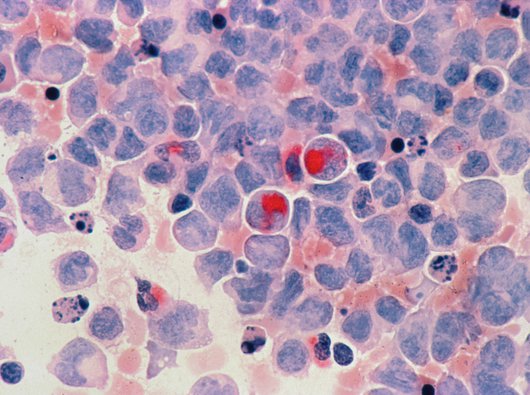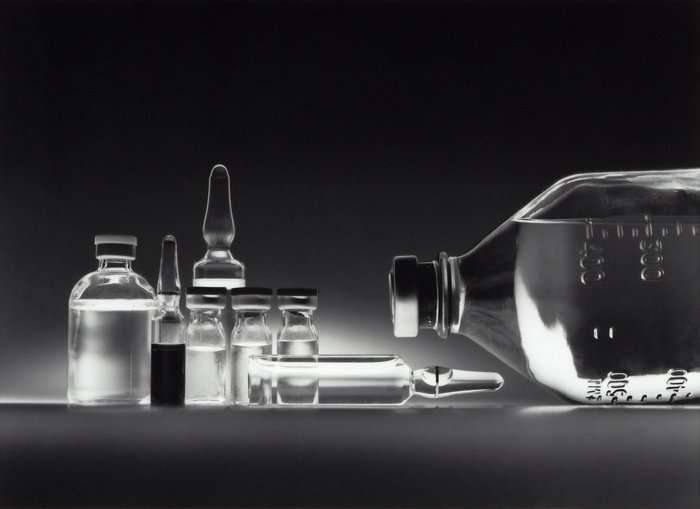Sidney Farber - The Father of Modern Chemotherapy
Dr Sidney Farber was an American paediatric pathologist. He discovered the role folic acid played in the creation of leukaemia cells and achieved the first clinical remission of leukaemia in children by using a chemical anti agent. This trial paved the way for the use of chemicals to treat cancer and gave hope to those with a diagnosis of blood cancer for which there was rarely an option of treatment.

Dr Sidney Farber & Child - Photo by unsplash National Cancer Institute
A small, damp lab in the basement...
Sidney Farber was born in Buffalo New York on September 30th 1903, the third of 14 children. Being fluent in German, he began his medical studies in Europe before being accepted in to Harvard for his second year where he graduated in 1927.
Sidney became a full time pathologist at the Children’s Hospital in Boston in 1929. His tiny, damp and poorly ventilated lab was in the basement of the building and this is where he would analyse the tissues, cells and bodies of infant patients who had died at the hospital. Moved and frustrated by the number of children dying from leukaemia, in 1947 he decided to make a professional change; moving from post-mortem examinations to studying chemicals and treating patients. He hoped to bring about an effective treatment and potential cure for childhood leukaemia.
At the time there seemed to be no hope...
Since it’s discovery in the 1840s, leukaemia had proved a cruel and ruthless disease with a bleak prognosis for children and adults alike. As leukaemia wasn't a solid tumour, treatment options were extremely limited, with and radiation therapy and surgery ruled out. Nearly a century had passed and treatments had still not improved.

AML Cells -Photo by unsplash National Cancer Institute
Dr Farber makes a discovery
At the time, leukaemia was seen as an impossible cancer to treat and a diagnosis usually led to little or no medical intervention. Dr Farber rejected this, and was driven to find a chemical agent that could cut off the abnormal cells that create leukaemia. Previous studies during the war years had shown that various types of anaemia could be cured using vitamin B12 and folic acid. From his knowledge of folic acid and its role in creating malignant cells, Farber believed that a if a drug could chemically block this it would also cut off the production of cancerous marrow.

Chemotherapy Drugs - Photo by unsplash National Cancer Institute
By a stroke of luck, a pharmaceutical manufacturer called Lederle was testing such a drug called aminopterin which had been discovered by bio-chemist Yellapragada Subbarow. This was later developed to methotrexate which is less toxic and is commonly used today in chemotherapy treatment.
In the winter of 1947, Farber treated 16 children with acute lymphoblastic leukaemia with aminopterin and 10 of them resulted in temporary remission. This trial was considered the first ever successful remission of leukaemia and the foundations of modern chemotherapy had been laid.
These findings were published in his 1948 paper Temporary Remissions in Acute Leukemia in Children Produced by Folic Acid Antagonist. . . Aminopterin where he noted “A promising direction for further research concerning the nature and treatment of acute leukaemia in children appears to have been established by the observations reported.” This was published in The New England Journal of Medicine and despite being met with initial pessimism and disbelief from the medical community, he continued to see more successful remissions and many more patients and their families travelled to his clinic.
A lifelong dedication to charity
Driven by this breakthrough, a thirst for research and dedication to his young patients, Farber started to think to the future of a chemical cure for childhood leukaemia and for cancer as a whole.
Farber launched himself into fundraising as he wished to expand his clinic and team and set his sights on charitable groups to help. As the wealthy of Hollywood glitz and glamour emerged from the war years looking for charities to support, he formed a connection with the Variety Club of New England to help fund his vision for a foundation for children’s cancer research. In 1948, the Children’s Cancer Research Fund was launched and the face of this campaign was a 12 year old lymphoma patient who was to be known anonymously as “Jimmy”. Following an interview with the child over the radio, donations started to pour in in response to the appeal. The appeal was so successful that the fund was renamed “Jimmy’s Fund” and the child whose real name was Einar, survived his cancer and went on to live until the age of 65.
In talking publicly about cancer using a human case study, the success of Jimmy's story's fundraising triggered campaigning for scientific investment and research. Farber had brought cancer in to the minds of the people and he went from a scientist to social innovator. As his clinic and team grew he began to develop complete patient care; by bringing together physicians, social workers, nutritionists, and counsellors all under the same team to plan together on how to treat their patients.
Later life and legacy
Dr Farber died of cardiac arrest aged 69 in 1973. He leaves behind a legacy in the Dana-Farber Cancer Institute in Boston which provides world class cancer care to adults and children and continues to carry out his work of cutting edge research. The "Jimmy Fund" still exists today at the centre and continues to fundraise for these projects, treatments and support for it's patients. Through complete devotion, research and innovation, Dr Farber paved the way to revolutionising cancer care forever and improving survival rates for future generations.

Because we've been beating blood cancer since 1960
We’re a community determined to beat blood cancer. We do this by funding research that takes us closer to a cure.
